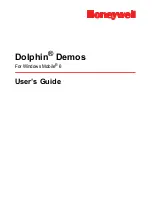
Creating numbering plans
209
Programming Operations Guide
Outgoing calls
Outgoing calls require line pool access codes or destination code (with defined routes) to leave the
system.
•
Access codes provide direct, unscheduled access to an analog, digital (T1), of Voice over IP
(VoIP) line pool. Refer to
“Programming access codes” on page 321
.
•
Destination codes also provide access to line pools, but they also allow more flexibility in
dialing, which allows for more complex routing options, such as scheduling, fallback routing
(VoIP trunks), call definition, and multiple routing (least-cost routing). Routing also allows
you to minimize the dialout for the user, especially to systems on the same private network.
Refer to
“Configuring call routing” on page 331
.
Outgoing calls can be either public or private, which is defined by the route. The public or private
designation determines which dialing plan is used to determine the validity of the call. Normally,
public calls are routed over PSTN trunks and private calls are routed over a private network.
However, MCDN trunks can also pass calls designated as public to allow remote nodes on the
network to call out of the PSTN of a local node. This is called tandem dialing. Refer to
“Outgoing
private calls routing” on page 316
,
“Outgoing public calls routing” on page 318
and
“Using the
MCDN access codes (tandem calls)” on page 327
.
•
If the outgoing call is designated as private, the system checks the beginning of the string for a
destination code that routes to a private network. It also checks that the dial string is the correct
length. The destination code routing determines what the final dial out string will be, adding or
removing digits, as required.
•
If the outgoing call is designated as public, the system checks the beginning of the string for a
destination code that routes to a PSTN or an MCDN trunk. If the call routes to a public route,
the system checks the public dialing table to ensure that the dialout string has legitimate
leading digits and is the correct length. If the call routes to an MCDN trunk, the call is passed
as dialed, minus the private networking codes. The call will pass through the system until the
system with the matching destination code receives it, at which point it will be sent through the
local PSTN of that system.
Summary of Contents for BCM 3.7
Page 4: ...4 Software licensing N0008589 3 3...
Page 32: ...32 Contents N0008589 3 3 W 937 Index 939...
Page 46: ...46 Tables N0008589 3 3...
Page 64: ...64 How to get help N0008589 3 3...
Page 90: ...90 Manually activating Telnet N0008589 3 3...
Page 116: ...116 Delayed system restart N0008589 3 3...
Page 194: ...194 Configuring a data module N0008589 3 3...
Page 276: ...276 Setting line telco features N0008589 3 3...
Page 310: ...310 Using COS passwords N0008589 3 3...
Page 364: ...364 Enhanced 911 E911 configuration N0008589 3 3...
Page 380: ...380 Renumbering DNs N0008589 3 3...
Page 398: ...398 Saving wizard pages on your computer N0008589 3 3...
Page 458: ...458 Voice Mail settings N0008589 3 3...
Page 488: ...488 Setting system telco features N0008589 3 3...
Page 508: ...508 Other programming that affects public networking N0008589 3 3...
Page 522: ...522 PRI networking using Call by Call services N0008589 3 3...
Page 592: ...592 Monitoring Hunt groups N0008589 3 3...
Page 636: ...636 Configuring Double Density N0008589 3 3...
Page 640: ...640 Using the Network Update Wizard N0008589 3 3...
Page 666: ...666 Importing and Exporting DHCP data N0008589 3 3...
Page 722: ...722 Restarting the router N0008589 3 3...
Page 726: ...726 Important Web Cache considerations N0008589 3 3...
Page 748: ...748 Configuring an Interface with NAT N0008589 3 3...
Page 794: ...794 IPSec N0008589 3 3...
Page 818: ...818 Configuring the Policy Agent characteristics N0008589 3 3...
Page 832: ...832 Firewall rules for Business Communications Manager with Dialup interfaces N0008589 3 3...
Page 876: ...876 ISDN Programming N0008589 3 3...
Page 1004: ...1004 Index N0008589 3 3...
















































